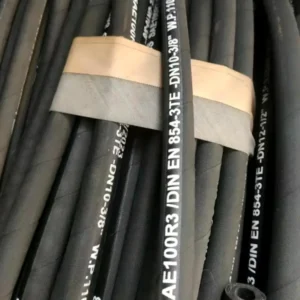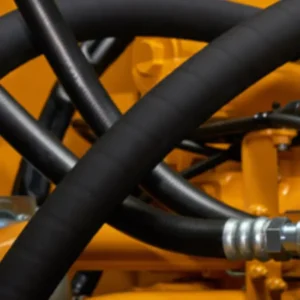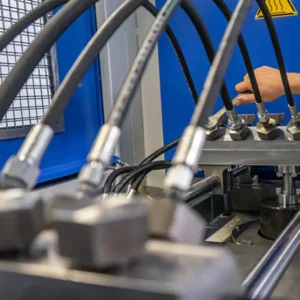When there’s an unexpected leak and downtime means financial loss, the urge to try to patch a hydraulic hose with duct tape is understandable. But is this a viable solution, even if only temporarily, or a dangerous gamble that could lead to bigger problems?
In this guide, I’ll dive into the realities of trying to patch a hydraulic hose with duct tape. We’ll explore why this practice is generally discouraged, the specific risks it poses, and what actually constitutes a safe and effective temporary fix and, more importantly, a permanent fix.
Dos and Don’ts of Repairing Hydraulic Hoses
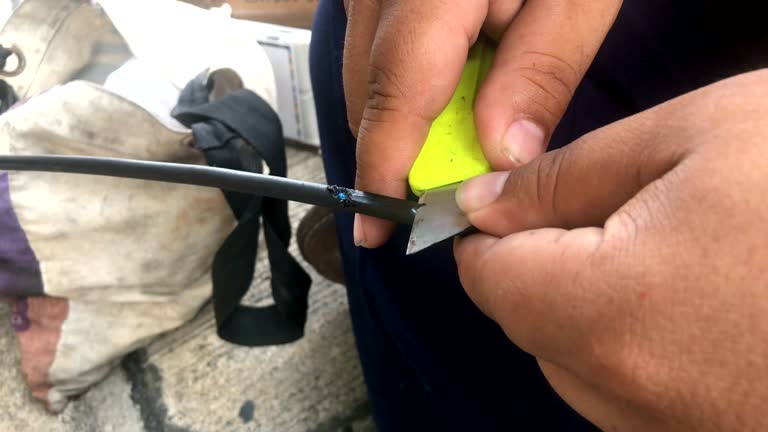
Hydraulic hose repair is a critical process that demands strict adherence to safety and technical guidelines. A botched repair can jeopardize system performance and, more dangerously, endanger personnel. To maximize the chances of a successful and safe temporary fix, one must be aware of essential best practices and common pitfalls. Following these Dos and Don’ts is non-negotiable for system integrity.
Dos of Repairing Hydraulic Hoses
- Do Depressurize the System Completely: Always ensure that the entire hydraulic system is fully shut down and all residual pressure is bled off before attempting any hose work. Stored energy in hydraulic systems can cause fittings to eject violently or inject fluid into the skin, leading to severe or fatal injuries. Safety must be the first step.
- Do Inspect for Hidden Damage: Thoroughly examine the entire hose length, not just the obvious failure point. Look for kinks, bulges, cuts, and blistering on the cover, as these indicate internal damage to the reinforcement layers. If such hidden damage is present, a complete replacement is the only safe and reliable course of action.
- Do Use Manufacturer-Matched Components: When replacing fittings or components, always use parts that are designed and rated for the specific hose type and pressure rating. Mixing and matching parts from different manufacturers or hose types can result in an unreliable crimp joint and catastrophic failure under pressure.
- Do Follow Proper Crimping Procedures: Adhere strictly to the manufacturer’s crimp specifications, including the correct crimp diameter and die selection for the hose and fitting combination. An improperly crimped hose will either leak or blow off under pressure, negating the entire repair effort and creating a safety risk.
Don’ts of Repairing Hydraulic Hoses
- Don’t Re-use Old Fittings or Ferrules: Never attempt to reuse the old fittings or ferrules from a failed hose assembly. Fittings are designed for a single crimp and are stressed during the initial failure. Reusing them compromises the integrity of the new assembly, leading to an extremely high risk of a fitting blow-off or leakage.
- Don’t Use General Purpose Clamps: Avoid using temporary or standard hose clamps, such as screw-type or worm-gear clamps, on high-pressure hydraulic lines. These clamps cannot withstand the extreme internal pressures of a hydraulic system. They will fail almost immediately, creating a dangerous projectile hazard and spraying high-pressure fluid.
- Don’t Bend the Hose Too Tightly: Be mindful of the minimum bend radius specified by the manufacturer for that particular hose. Bending a hose tighter than this radius will damage the internal reinforcement wires, significantly weaken the hose structure, and lead to premature failure, often near the fitting.
- Don’t Assume Minor Leaks Are Harmless: Never ignore a minor leak or seep, even a slow drip. This indicates that the hose or fitting integrity is already compromised and failure is likely imminent. Fluid under pressure can cause pinhole leaks invisible to the naked eye that can inject into skin, which is a serious medical emergency.
Why You Should Never Repair Hydraulic Hose With Tape
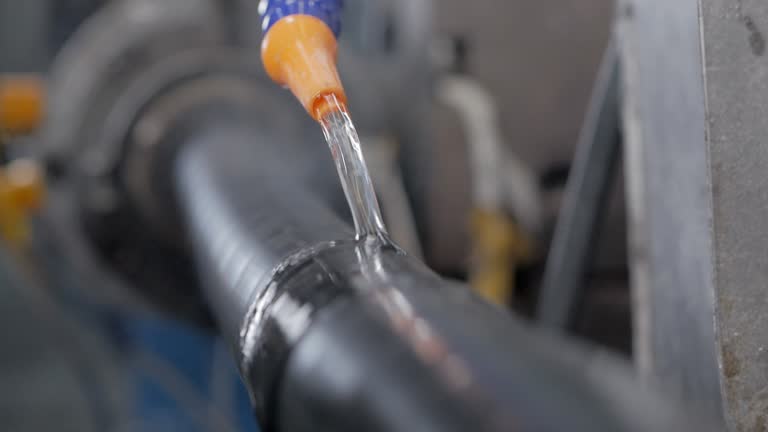
From my professional perspective, attempting to repair a hydraulic hose with tape is almost universally discouraged for critical hydraulic lines. The inherent characteristics of hydraulic systems make tape an unsuitable material for a safe or even reliably temporary repair. Let’s break down the core reasons why this practice is so risky.
The Pressure Problem: Tapes Versus PSI
Hydraulic systems are all about power transmission through pressurized fluid. Depending on the application, working pressures can range from a few hundred PSI to over 10,000 PSI. Consider typical tapes:
- Duct Tape: Designed for general-purpose sealing, not pressure containment. It might withstand a few PSI at best.
- Electrical Tape: Insulating properties are its strength, not pressure resistance.
- Fiberglass/Rescue Tape: While these self-fusing silicone tapes offer better tensile strength, they are still limited. They might temporarily slow a very low-pressure weep, but they are not rated for the dynamic, high pressures of hydraulic systems.
No commercially available tape is engineered to reliably withstand the typical operating pressures of a hydraulic hose. The fluid will find the path of least resistance, forcing its way under, around, or directly through the tape, often with explosive force.
The Fluid Compatibility Issue: Oil, Heat, and Adhesion
Hydraulic fluid is specifically formulated from petroleum-based or synthetic oil. These fluids, especially when hot, can rapidly degrade the adhesives and materials in many common tapes.
- Adhesive Breakdown: The solvents and temperature of hydraulic oil will quickly attack and dissolve the adhesive on tapes, causing them to lose their grip and peel away.
- Material Degradation: Some tape materials themselves are not resistant to hydraulic fluid, leading to softening, swelling, or complete disintegration.
- High Temperatures: Hydraulic systems often run hot. This heat further weakens tape adhesives and materials, accelerating their failure under pressure.
Even if a tape could momentarily hold back pressure, its integrity would be compromised almost immediately by the fluid and heat, leading to rapid failure.
Safety Risks: The Most Critical Concern
This is where attempting to repair hydraulic hose with tape transitions from ineffective to downright dangerous. A failing high-pressure hydraulic hose is not just a messy leak; it’s a severe safety hazard.
- Fluid Injection Injuries: A pinhole leak or burst from a taped repair can spray hydraulic fluid with enough force to penetrate skin, causing a fluid injection injury. This is a medical emergency that can lead to amputation, severe infection, or even death if not treated immediately by medical professionals who understand hydraulic injection injuries. The entry wound might look minor, but the internal damage can be catastrophic.
- Machine Malfunction/Loss of Control: A sudden hose failure can lead to a loss of hydraulic power to critical machine functions (e.g., steering, braking, lifting). This can result in loss of control, causing collisions, drops of heavy loads, or other serious accidents.
- Fire Hazard: Hydraulic fluid is flammable. A high-pressure spray onto a hot engine manifold or exhaust system can ignite, leading to a catastrophic fire.
- Environmental Contamination: Uncontrolled fluid leaks cause environmental damage and can incur heavy fines.
Given these severe risks, any attempt to repair hydraulic hose with tape must be viewed as an extreme last resort in an emergency, used only to safely move equipment away from immediate danger, and with the utmost caution. It is never a long-term solution.
When a Taped Repair Might Be Considered (and Its Limitations)
While I strongly advise against it for high-pressure lines, there may be extremely rare, specific scenarios where a temporary taped “repair” is considered, provided a full understanding of its severe limitations and risks is obtained.
Extremely Low-Pressure (Non-Hydraulic) Applications:
- Drain Lines / Non-Pressurized Return Lines: For very low-pressure or gravity-fed drain lines that are merely weeping or seeping, and where the fluid is non-hazardous and relatively cool, a temporary tape wrap might slow the leak enough to allow for a planned shutdown and proper repair. This is not a hydraulic power line.
- Covering a Scuff/Abrasion: If the hose cover (outer layer) is scuffed or abraded but the underlying reinforcement layers are clearly intact, a strong, fluid-resistant tape might be used to prevent further external damage until the hose can be replaced. This is preventative, not a pressure repair.
Absolute Emergency (and Immediately Followed by Proper Repair):
- Moving Equipment Off a Roadway/Out of Immediate Danger: In an absolute emergency where a machine is completely immobilized by a leak in a critical location (e.g., blocking traffic, in a dangerous excavation), and no other immediate solution is possible, a tape might be applied with the hydraulic system immediately shut down and depressurized. The goal is purely to get the machine to a safer spot for proper repair, with minimal pressure applied during the move. The machine should then be fully shut down and properly repaired at the earliest opportunity.
Even in these rare scenarios, the tape is not repairing the hose. It’s, at best, a containment measure that buys minutes, not hours or days. The system should be operated at the absolute minimum pressure necessary, and a permanent, proper repair (hose replacement) must be the immediate next step.
The Proper Way to Address a Leaking Hydraulic Hose
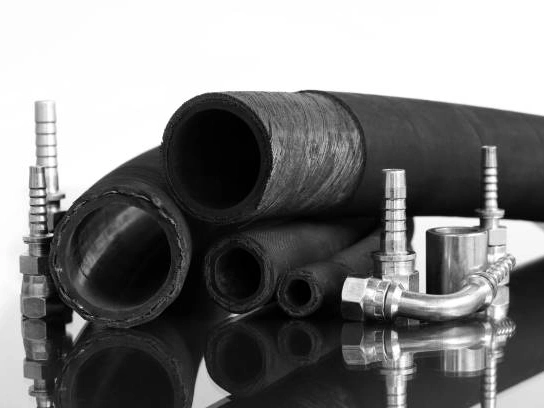
Instead of trying to repair a hydraulic hose with tape, your focus should always be on proper, safe, and effective solutions. These involve either a temporary field-expedient repair kit for immediate needs or, ideally, a complete hose replacement.
Safety First – Immediately Depressurize the System
No matter the leak, the very first step is to shut down the hydraulic system and fully depressurize it. This means turning off the engine/motor, cycling the controls to release any trapped pressure in actuators, and potentially opening bleed valves. Safety precautions, including wearing appropriate PPE (gloves, eye protection), are paramount. Never approach a leaking high-pressure hose without depressurizing the system.
Temporary Field Repairs (Not Tape!)
For temporary, field-expedient repairs, certain products are available that are vastly superior to tape. These are still temporary but offer a much safer alternative:
- Hydraulic Hose Repair Clamps/Kits: These kits typically involve a metal sleeve or clamps that are applied over the damaged section of the hose, sometimes with a sealant. They are designed to encapsulate the leak and offer some pressure containment. While still limited compared to a new hose assembly, they are specifically engineered for temporary hydraulic repairs and are a far safer option than tape.
- Emergency Repair Sleeves: Some specialized sleeves can be slid over a damaged section and crimped or clamped into place. These are also designed for limited pressure and duration.
Important Note: Even with these temporary repair kits, the hose should be replaced at the earliest opportunity. These are designed to get you back to a service bay, not to continue operation indefinitely.
The Permanent Solution – Hydraulic Hose Replacement
The only truly safe, reliable, and permanent solution for a damaged hydraulic hose is complete hose assembly replacement. This involves:
- Identifying the Correct Hose: Matching the original hose’s type, size (ID and OD), pressure rating, temperature rating, fluid compatibility, and fitting types is crucial. Always use the manufacturer’s specifications.
- Proper Fabrication: A new hose assembly should be professionally fabricated, with fittings correctly crimped or attached according to industry standards.
- Correct Installation: The new hose must be routed properly, avoiding kinks, sharp bends, excessive tension, or abrasion points. Ensure it has enough slack to accommodate machine movement.
- System Bleeding: After installation, the hydraulic system must be properly bled to remove any trapped air, which can cause erratic operation and damage.
- Pressure Testing: If possible, conduct a static and dynamic pressure test to confirm the integrity of the new assembly before putting the machine back into full service.
Preventative Measures: Avoiding the Need for Emergency Repairs
My strongest advice regarding repairing a hydraulic hose with tape is to make it irrelevant by focusing on prevention. Proactive maintenance and proper system design dramatically reduce the likelihood of hose failures.
Regular Inspections: Implement a routine inspection schedule for all hydraulic hoses. Look for:
- External wear or abrasion: Scuffing, cuts, or worn spots on the outer cover.
- Cracks or hardening: Especially near fittings or in areas exposed to heat.
- Bulges or blisters: Indicates internal reinforcement failure.
- Leaks: Even minor weeping can indicate an impending larger issue.
- Kinks or twists: Improper routing or installation.
- Corrosion on fittings: Can lead to leaks or weakened connections.
Proper Routing and Installation:
- Avoid Tight Bends: Respect the hose’s minimum bend radius.
- Prevent Abrasion: Use hose clamps, protective sleeves, or routing techniques to keep hoses from rubbing against each other or machine components.
- Allow for Movement: Ensure hoses have enough slack for machine articulation without being stretched.
- Avoid twisting: Install hoses without torsion. Mark the hose to ensure it’s not twisted upon installation.
Use the Right Hose for the Job: As discussed in our previous blog on “Types of Specialty Hydraulic Hoses,” always ensure the hose matches the pressure, temperature, fluid, and environmental conditions of the application.
Maintain Fluid Cleanliness: Contaminants are a major cause of internal hose wear and premature failure. Regular fluid analysis and filter changes are vital.
Scheduled Replacement: For critical applications, consider proactive hose replacement based on manufacturer recommendations or observed service life trends, even if no visible damage is present.
Conclusion
Applying tape to a hydraulic hose is a practice limited strictly to emergency, temporary fixes to control leaks and minimize environmental spillage. Standard tapes, like duct tape, are entirely unsuitable and will fail instantly under high pressure, creating a severe safety hazard. Specialized, self-fusing silicone tapes offer a marginally better seal but must only be seen as a stop-gap measure to get equipment safely off the job site.
The feasibility of a taped repair is zero for long-term use. Hydraulic systems operate at pressures that no tape can reliably contain, especially in a dynamic, high-vibration environment. Any compromise to the hose’s integrity necessitates a full replacement to ensure the safety of personnel and prevent catastrophic, costly damage to your hydraulic pump and other sensitive components.
Ultimately, the choice is between a momentary, risky patch and a permanent, safe solution. Prioritize reliability and safety by adhering to manufacturer guidelines which mandate replacement for a compromised hose. For wholesale hydraulic hoses that guarantee long-term performance and safety, choose Rubber Hoses.

